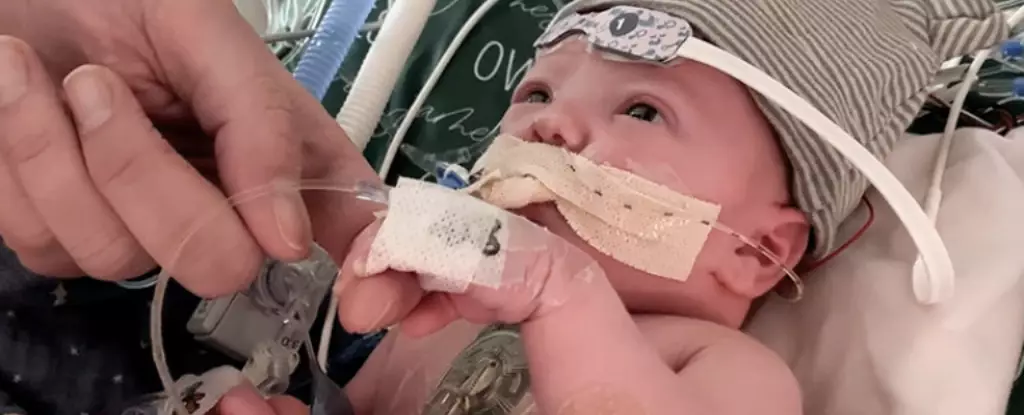In a medical first, an infant named Owen Monroe became the recipient of a partial heart transplant, offering hope for a future without multiple heart surgeries. Surgeons at Duke University accomplished this groundbreaking feat by implanting heart valves and vessels from a donor baby into Owen’s heart when he was just 18 days old. What sets this procedure apart is the utilization of living donor tissue to replace only the defective parts of the native heart, a novel approach that had previously been tested only on piglets. Astonishingly, over a year later, Owen’s heart has grown alongside the implanted tissue, resulting in excellent heart function and remarkable developmental milestones for a child of his age.
A Testament to the Success of Innovative Technology
The publication of Owen’s progress in the Journal of the American Medical Association (JAMA) serves as indisputable evidence of the effectiveness of this groundbreaking technology and its potential to revolutionize cardiac care for other children in need. Joseph Turek, the lead surgeon, emphasizes the profound implications of this achievement, asserting that the technique can be applied to save the lives of numerous children suffering from similar heart conditions.
Owen’s parents, Nick and Tayler Monroe, made the courageous decision to proceed with the surgery after learning of their baby’s serious heart defect known as truncus arteriosus. This condition, affecting approximately 250 infants annually in the US, occurs when a channel in the heart fails to separate during development, leading to the fusion of two major blood vessels and a subsequent oxygen deficiency.
Traditionally, infants with truncus arteriosus have been offered either a full heart transplant or treatment involving frozen tissue harvested from cadaver hearts. While the former provides growing room for the transplanted organ along with the child, long-term complications often arise, resulting in a staggering 50% mortality rate by the age of 20. In addition, recipients of donor hearts must undergo immune-suppressing medication, leaving them vulnerable to infections and certain types of cancer. Interestingly, it is the donor heart muscle itself that triggers rejection rather than the valves and vessels.
The Advantages of Partial Transplants
By opting for a partial transplant of valves and vessels, baby Owen required only half the dose of one of the immunosuppressive drugs. This significant reduction in medication not only minimizes the risk of infections and malignancies but also spares Owen from potential long-term complications associated with full heart transplants.
Standard treatment using frozen cadaver tissues necessitates repetitive surgical interventions, approximately every few years, to address outgrown grafts. Sadly, this approach carries an alarming 50% mortality risk for infants. Owen’s case, with its remarkable success and growth of the implanted tissue, sets a promising precedent for the future of cardiovascular care in similar cases.
Little Owen was originally listed for a complete heart transplant, but his parents knew that waiting for a suitable donor heart would be an uphill battle, with a 6-month waiting period on average. Early on, Owen’s weakened heart necessitated urgent intervention, such as an extracorporeal membrane oxygenation (ECMO) procedure, which his frail condition rendered impossible. The Monroes found themselves in an agonizing situation with limited options and a desperate need for a life-saving solution.
Owen Monroe’s exceptional journey of hope and healing through partial heart transplantation has not only transformed his life but also opened the door to a world of opportunities in pediatric cardiology. By combining innovation, courage, and compassionate care, surgeons and medical professionals have laid the groundwork for a future where infants facing life-threatening heart conditions can expect a better quality of life, free from the burdensome specter of repeated surgeries and related risks. As the medical community continues to learn from Owen’s case, it is safe to say that they are one step closer to rewriting the narrative of pediatric heart transplantation.


Leave a Reply